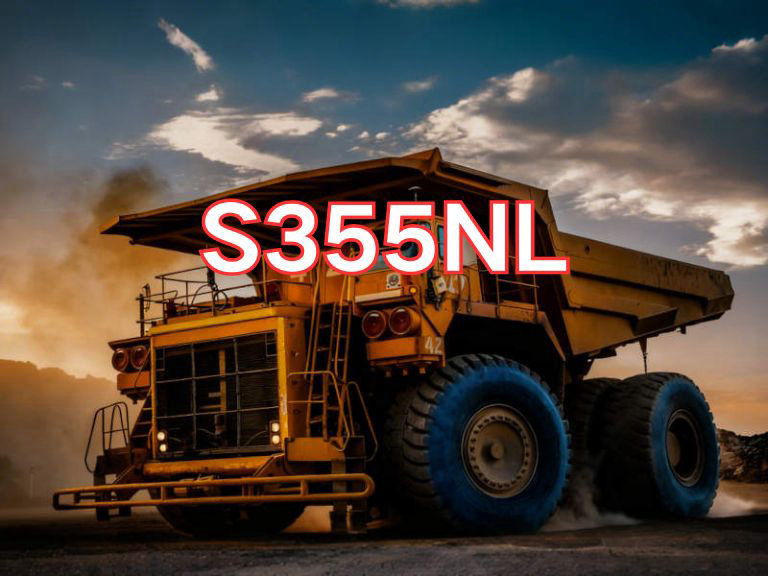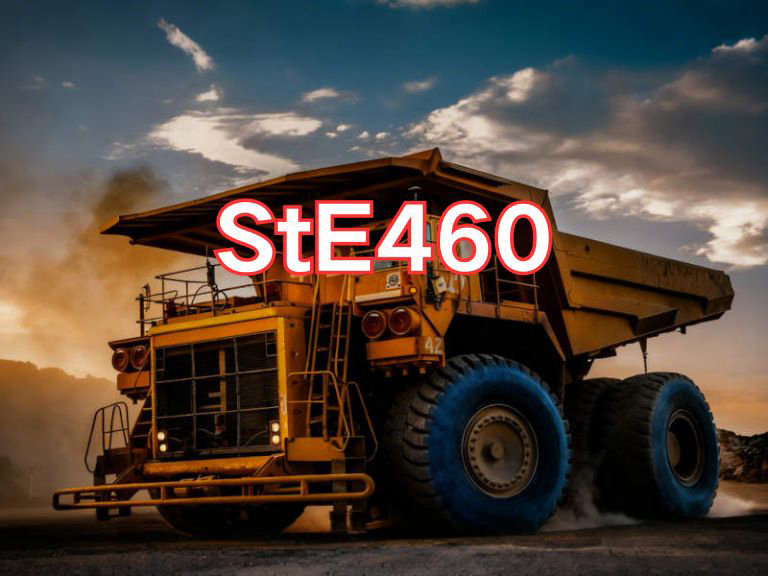

S355ML
S355ML is a high-strength, fine-grain structural steel, with its designation following the European standard EN 10025-4 naming system. In this system, "S" stands for "Structural steel," indicating it is designed for load-bearing and engineering applications; "355" refers to the specified minimum yield strength of 355 MPa at room temperature; "M" denotes the delivery condition as "Thermomechanically Rolled," meaning the steel is produced using a Thermo-Mechanical Control Process (TMCP). This advanced manufacturing technique precisely controls rolling temperature, deformation rate, and accelerated cooling to achieve grain refinement and microstructural strengthening without requiring post-rolling heat treatment, resulting in excellent mechanical properties; the letter "L" stands for "Longitudinal impact test" and indicates superior toughness requirements at very low temperatures. Specifically, S355ML must meet a minimum absorbed energy requirement (typically ≥27 J) in Charpy V-notch impact testing at an extremely low temperature of -50°C. Therefore, S355ML is a high-strength, weldable, fine-grain structural steel produced via thermomechanical rolling, maintaining reliable toughness even at -50°C, making it one of the most cold-resistant grades in the S355 series produced by TMCP.
The main characteristics of S355ML steel plate include high strength, exceptional low-temperature toughness, and excellent weldability. Thanks to the TMCP process, its microstructure is uniform and dense, with significantly refined grains, greatly enhancing resistance to brittle fracture. Its tensile strength typically ranges from 490 to 630 MPa, with a minimum yield strength of 355 MPa, along with good elongation and fatigue resistance. The chemical composition is strictly controlled, with low levels of impurities such as sulfur and phosphorus, and may include micro-alloying elements to further optimize performance. The steel has a low carbon equivalent (CEV), ensuring outstanding weldability compatible with various welding methods such as MAG, SAW, and FCAW. Welded joints exhibit good toughness, and preheating is generally not required, making it ideal for on-site welding and automated fabrication of large structures. Additionally, it offers good cold-forming capability to meet the processing demands of complex components.
S355ML is widely used in extreme cold environments or in safety-critical engineering structures, such as Arctic infrastructure, liquefied natural gas (LNG) storage and transport equipment, low-temperature pressure vessels, offshore platforms, heavy construction machinery, railway vehicles, and wind turbine towers. It is particularly suitable for key load-bearing components exposed to prolonged cold climates, dynamic loads, or stress concentrations.
The current standard for S355ML steel plate is EN 10025-4:2019, titled Hot Rolled Products of Structural Steels – Part 4: Technical Delivery Conditions for Thermomechanically Rolled Weldable Fine Grain Structural Steels. Published in 2019, this version supersedes EN 10025-4:2004 and is the authoritative international specification. It clearly defines technical requirements for chemical composition, mechanical properties, TMCP process, and impact toughness at -50°C. As a premium low-temperature structural steel, S355ML plays an irreplaceable role in ensuring structural safety in extreme cold conditions and represents a key high-performance material choice in modern industrial applications.

Ultrasonic Testing (UT)
A key non-destructive testing technique that uses high-frequency sound waves to detect internal flaws in steel plates. The probe emits sound waves, which reflect when encountering defects such as cracks or inclusions. The receiver captures the echoes, enabling precise determination of defect location and size. With high sensitivity, strong penetration, and fast inspection speed, UT effectively ensures internal quality, widely used in the production of heavy plates, pressure vessel plates, and other high-end products to guarantee safety and reliability.

Magnetic Particle Testing (MT)
A common surface inspection method that magnetizes the workpiece, causing leakage magnetic fields at surface or near-surface defects like cracks or inclusions, which attract magnetic particles to form visible indications. Simple to operate and highly sensitive, MT is suitable for rapid inspection of surface and near-surface flaws in ferromagnetic materials, widely used for online or offline inspection of plate edges, ends, and welds, ensuring product quality and safety.

Penetrant Testing (PT)
A non-destructive method for detecting surface-breaking flaws. A penetrant liquid is applied to the cleaned steel surface, allowing it to seep into defects such as cracks or pores. After removing excess penetrant, a developer is applied, causing the trapped penetrant to bleed out and form visible indications. Simple and cost-effective, PT is suitable for inspecting surface defects in various non-porous materials, commonly used for welds, castings, and complex components, effectively ensuring surface quality of steel plates.











